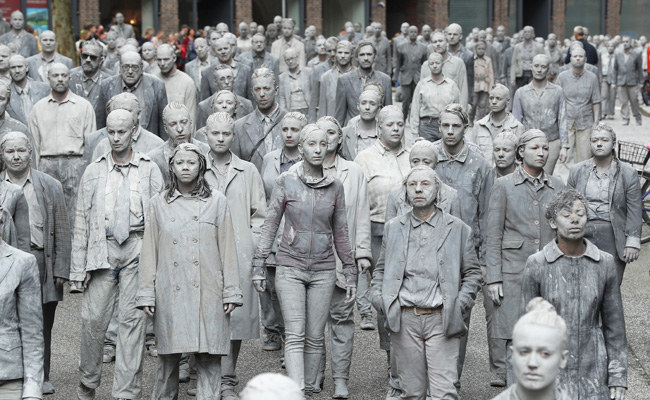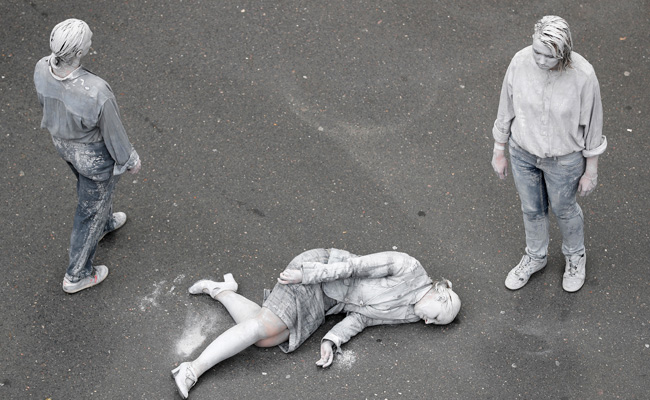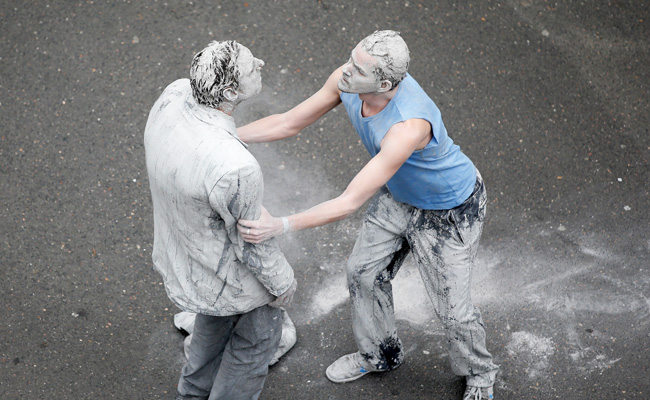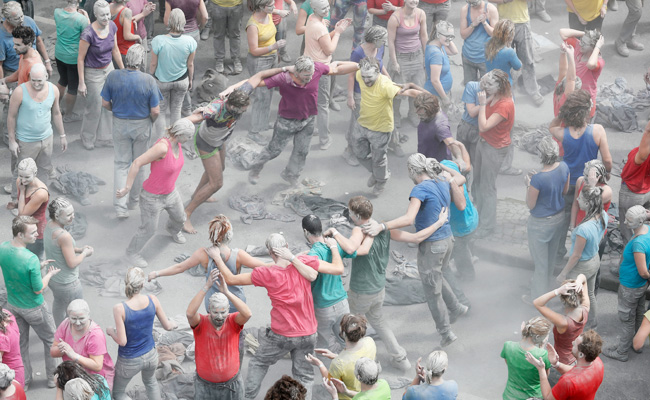
Part zombie walk, part political protest, part performance art piece, “Welcome to Hell” featured 1,000 activists and artists in Hamburg, Germany to advocate against capitalism, President Trump, and political apathy ahead of the G20 Summit this week. The “performative arts intervention” did not include paid protestors or Norman Reedus (sad!), but it did involve participants marching through the streets covered from head-to-toe in grey clay before shedding their stony outer layer to reveal their bare skin and bright clothing while dancing in the streets. It’s as if “Thriller” took place during the Summer of Love but was shot as an Weimar-era art film.

The organizers explained that the mission of the peaceful protest was simply to call “on the world to make Hamburg a focal point of the resistance against the old and new capitalist authorities.” Emphasis on the word focal. The zombie getups were carefully chosen over mere street presence because the group, known as 1,000 Gestalten, wanted “to create an image, because we believe in the power of images.” The shift from grey scale to color is meant to represent the casting off of individualism and competition to reveal their inner humanity.
1,000 Gestalten is affiliated with several cultural organizations and charities in Hamburg, including Neu am See e.V., which has funded refugee programs, and Gangviertel, an organization focused on revitalizing Hamburg neighborhoods through artistic collaboration and place-making initiatives. By blending political protest with memorable images, organizers and participants hoped to make a greater impact and inspire more people to think and get involved. Planners of the protest told Reuters, “The goal of our performance today is to move the people in their hearts, to give them the motivation to get politically engaged again.”

“Welcome to Hell” isn’t the only artistic protest planned to take place around the G20 Summit. Turkey is upset over an art piece installed outside the German Chancellory by the Center for Political Beauty that implies Tayyip Erdogan, Vladimir Putin, and King Salman bin Abdulaziz are dictators. The banner’s caption reads “Do you want this car? Kill dictatorship.” The Center for Political Beauty insists that it advocates nonviolent protest, but the Turkish Foregin Ministry released a strongly worded statement explaining their view that “the wording on the banner is a direct call for violence targeting the lives of the leaders whose photos are depicted on it.”

Germany has a long history of blending protest movements with artistic collectives, especially during periods of political tumult. Some of 1,000 Gestalten’s rhetoric about creating memorable visuals is reminiscent of Geschichtspolitik, or the politics of memory. Geschichtspolitik is a school of thought that wrestles with how we collectively record and respond to certain cultural events, such as the Holocaust or the Berlin Wall period in the case of Germany, or our own current struggle with Confederate memorials. The Gestalten website reads, “We want to put back in memory how compassion and public spirit conveys identity for a society.”
It’s not a bad goal, considering the political tensions waiting for world leaders once they convene at the Summit.
